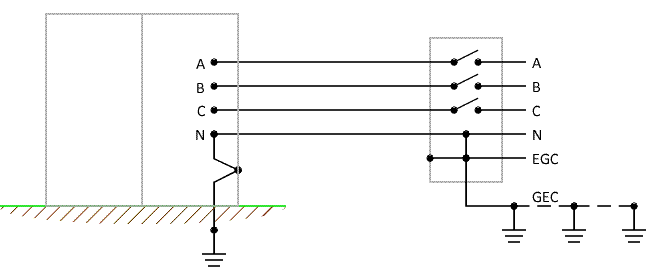Zane Bailey
Member
I have a 12KV to 480v step down outdoor transformer that feeds a building with a 480v service distribution panel board. The transformer has a factory installed bonding jumper to the case. The distribution panel board also has a removable bonding jumper connecting the grounded conductors and the grounding conductor bus bars. The Distribution panel board is the building service disconnects means. Is it permissible/required by code as per 250.24(A) (2) NEC for outdoor transformers, to leave the two bonding jumpers permanently installed?
SENOIR ELECTRICAL INSPECTOR: ZANE BAILEY.
SENOIR ELECTRICAL INSPECTOR: ZANE BAILEY.



